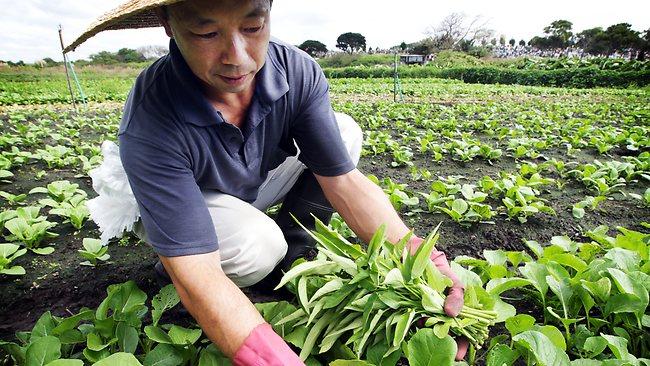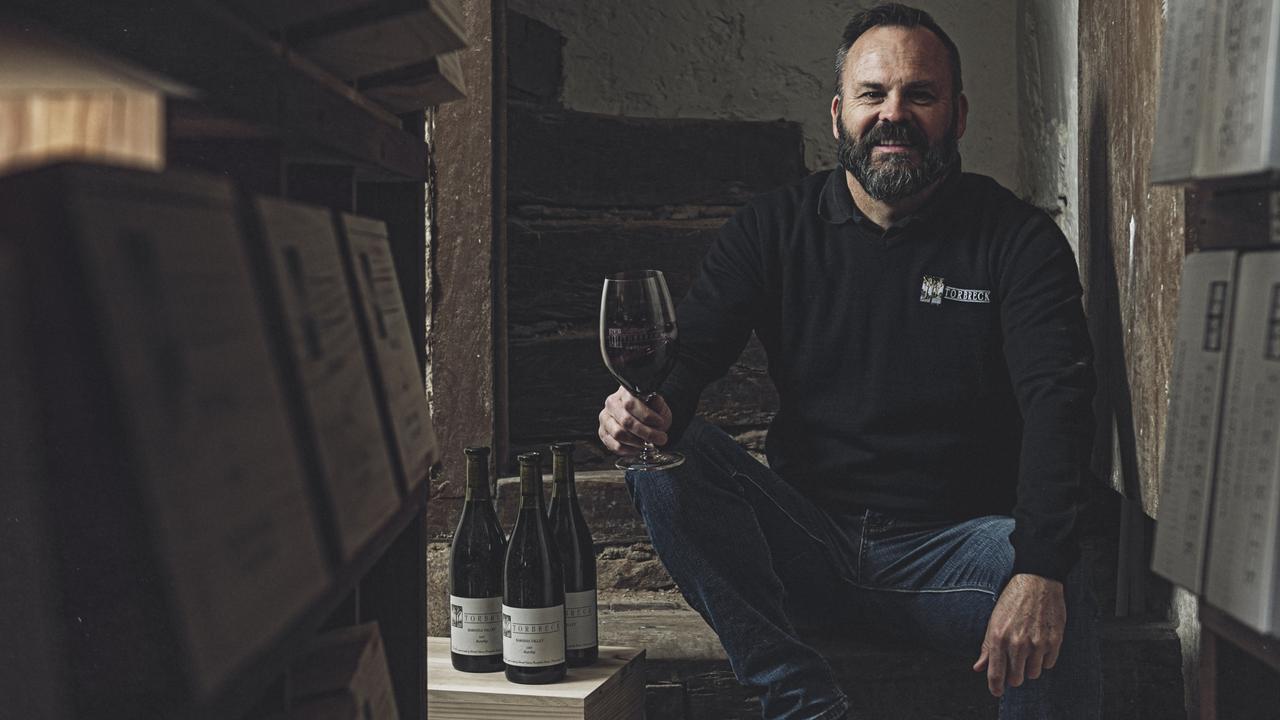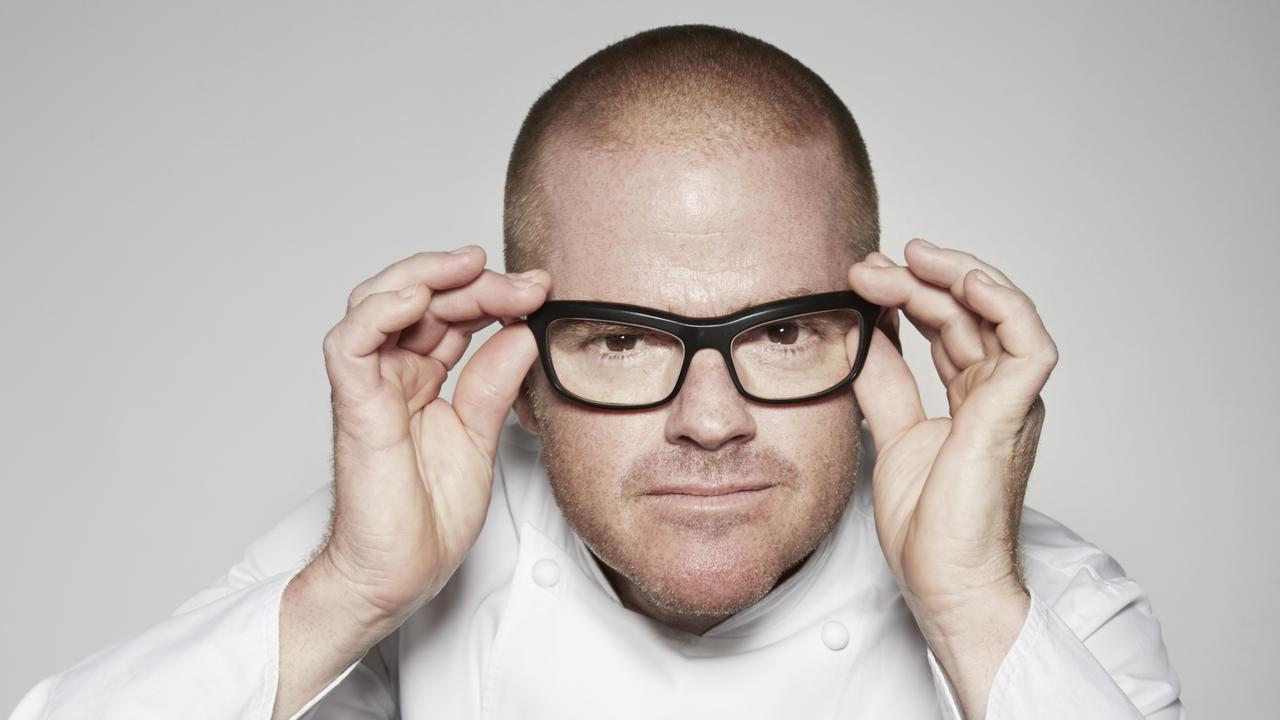Market gardener a true local
THE mint is knee high in Gordon Ha's Sydney market garden, but it's the smell of spring onions that's most pungent on this warm afternoon.

THE mint is knee high in Gordon Ha's Sydney market garden, but it's the smell of spring onions that's most pungent on this warm afternoon.
What makes his plot so unusual is not the produce he grows - although it's plentiful and lush - but the land's location and history. As one of the few remaining Chinese market gardens close to the city, it's a fragile remnant of local food production.
The Ha family has worked this plot for more than 80 years. "When my dad first came here to join his uncle, they grew more European vegetables - celery, iceberg lettuce, rhubarb and turnip," says Gordon. "Now we're doing more Chinese vegetables like bok choy, choy sum, on choy and Chinese broccoli. We grow herbs too, like Italian parsley, mint, coriander, rocket and dill."
While Gordon is chief grower, brother Terry looks after sales, running their stall at Flemington Markets and delivering to local restaurants and greengrocers. As president of the Chinese Growers Association, Terry Ha estimates about 300 Chinese families are growing produce in the Sydney basin, but only 10 are still working the original inner precinct of Botany, Matraville, La Perouse, Banksia, Kogarah and Rockdale. The sandy, alluvial soils just southeast of the city, which are easily worked and free-draining, have long made the area ideal for market gardening. Partnered with readily available water from a high water table and freshwater creeks, they've fed Sydney for most of its history.
In the 1800s, the burgeoning city of Sydney relied on local market gardens, with the earliest farm at La Perouse settled in the 1830s. Chinese market gardeners appear in Sydney's historical records from the 1860s, following the great influx of Chinese triggered by the 1850s gold rush. They brought traditional skills in intensive farming and a strong work ethic that saw them quickly dominate the fresh vegetable market. According to City of Sydney historian Lisa Murray, by the 1880s Alexandria was the vegetable bowl of Sydney, and more than half the market gardens were worked by Chinese. By the turn of the century, market gardening and Chinese were almost interchangeable terms. Seed merchants Anderson and Co tapped this important market in 1910 by placing Chinese-language advertisements in the Chinese Australian Herald and employing a translator. Their range included cabbage, beetroot, carrots, cauliflower, cucumber, lettuce, onions, parsnip and turnips. By this time there were Chinese market gardeners from Rose Bay to Randwick and through the southeast, with others in Willoughby, Fairfield and Chester Hill. They sold their produce at the wholesale markets and hawking door to door, becoming a familiar morning sight in the suburbs.
Inevitably, over time demand for city housing increased and land values rose, causing their gradual disappearance. After World War II the surge of Italian and other migrants into vegetable growing accelerated the decline more sharply. Today, for the handful of Chinese-background growers remaining in this southeast pocket of the city, the methods of farming are largely unchanged, using manual labour and basic tools, but the world has changed around them.
The Ha brothers' plot is part of 7ha of crown land tucked against the Eastern Suburbs Memorial Park, better known as the Botany Cemetery. The Chinese market gardens here were listed on the State Heritage Register in 1999 for their historical, agricultural and social significance to NSW and their cultural significance to the Sydney Chinese community. (There's also an older story, unsubstantiated but intriguing, positing that Comte de La Perouse established a vegetable garden in Phillip Bay to produce vegetables for his return journey to France, which may have been more or less in the same place.)
The largest of the three heritage-listed Chinese market gardens in the area is along Occupation Road, Kyeemagh. The 8ha site, in continuous use as market gardens since the late 19th century, is leased in four 2ha lots to Chinese family businesses. Sited almost at the end of the east-west runway of Sydney's Kingsford Smith airport, it's a remarkable place. With airliners low overhead and neat suburban houses lining one side of the street, the opposite fields of bright green vegetables are almost surreal. Workers in conical straw hats conjure a scene that could be anywhere in Southeast Asia.
On West Botany Street, Rockdale, the heritage listing also covers a 19th-century timber packing shed, still in use today. The plot has been a market garden since 1892 and today is a leading supplier to Sydney of Italian parsley - indeed, that's all that's grown across the 2.5ha farm. From seed sown in early spring each year, it takes about 12 weeks for the parsley to reach harvestable size. The plants are cut near the base by hand and regrow in five to six weeks, in a continuous cycle of harvesting until late winter. The Chinese-Australian owner of this parsley enterprise tells me he just loves tabouli.
Back at the Ha brothers' plot, Gordon works 6 1/2 days a week, starting at 6am and finishing at sunset, as he's done for the past 20 years. His only machine is a hand-held rotary tiller. "No way I'd use big tractors here," he says. "They need too much turning space." He picks fresh every day, saves his own seed, and grows in smallish batches to ensure a continuous supply.
But his future is threatened. A 2010 proposal to expand the Botany Cemetery has developed into a stoush that remains unresolved. Under the plan, the cemetery wants 60 per cent of the market garden land. Former Randwick mayor Murray Matson swore to protect the market gardens and Randwick City Council, under new Mayor Scott Nash, proposes rezoning the land as "primary production small lot, rural". The National Trust of Australia (NSW) has added its weight, listing the gardens on its heritage register last year. Despite a 2008 Lands Department report that deemed the site unsuitable for burials because of the high water table and flooding risk, there has still been no firm decision. Only two of the three adjacent plots are now worked.
"The third farmer retired," says Gordon Ha. "No one wants to take over because the cemetery might take the land. You'd put all your income into the farm before it starts producing, and if it's taken away that's money down the drain. I feel unsecured, just working day by day. I'm too young to retire, with kids at school, so I just keep planting and wait to see what happens." Botany Cemetery
The irony is that the locavore movement has never been stronger. In terms of food miles, these Chinese market gardens are some of the most efficient in the country; so if we wish to keep buying fresh vegetables grown locally, we need to cherish these local farms. And not just in the inner city - all over the Sydney basin we're converting our most fertile, productive land to housing. The basin is the state's third largest area for vegetable production and its agricultural produce is worth $1 billion a year. Rapid expansion of the city's population is in conflict with our food security.
"In 10-20 years there will probably be no growers around the city at all," worries Gordon. "We keep pushing out further west to build houses, so where are the vegetables going to come from - way out, or interstate, or overseas? I wouldn't buy those. We'll be in trouble, because there'll be no fresh vegetables - the taste will be gone by the time they're on your plate."



